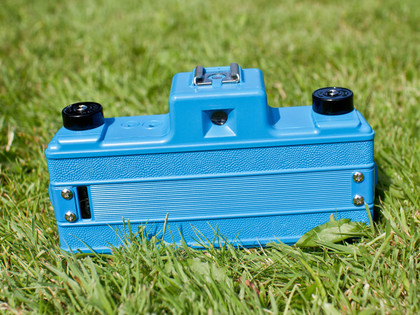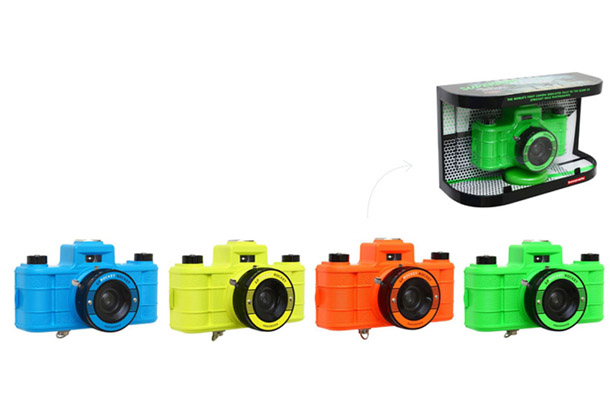Why you can trust TechRadar

There's no denying that this is a bold camera, and you will get some slightly puzzled glances from those unfamiliar with the Lomo brand. It's fairly bulky in the hand and unless you have the pockets of a clown, there's no way you're going to be able to slip this in.
However, it's also a fun design, and, pretty simple and easy to use. Digital aficionados may struggle with the concept of actually inserting traditional film, but it's really a doddle with simple-to-follow instructions making it easy.
It's also a bonus that the camera uses 35mm film, which is still relatively easy to get hold of, unlike the 120mm film is which is used in some other Lomo models.
The lens has a rudimentary focusing system, allowing you to switch between "macro" (0.6-1m) and 1m-infinity. Obviously without a rear LCD screen to guide you, it can be a little hit and miss whether you will get your subject in focus but this is something you will learn to judge better the more you use the camera.
Using the shutter release is a little different from most cameras. Instead of a standard button atop the camera, a metal arm protrudes from the lens. It makes a very satisfying 'click' noise after each release, but it is a little tricky to use when shooting in portrait orientation.
The other problem with the metal arm is that it can be relatively easy to knock when grabbing the camera from your bag – and with film that can of course mean a wasted frame that will still cost you money to develop.
You'll find another switch at the bottom of the camera for switching between "sunny" and "cloudy" setting. It's pretty hidden away from view so it can be easy to forget this setting altogether, meaning that some of our pictures were a little disappointing, but again this is something you could probably learn to remember over time.
As the Sprocket Rocket shoots panoramic photographs, it will only fit 18 images on a standard 36 exposure film. A handy white dot shows through a window at the top of the camera to show you when you've wound on the film enough, to allow you to perfectly align your shots. If you prefer you can overlap or double expose for more creative effects.
We had a lot of fun experimenting double exposure and overlapping images, but again this is something that can take a lot of practice before you perfect the technique – but of course, this is all part of the fun.
Amy has been writing about cameras, photography and associated tech since 2009. Amy was once part of the photography testing team for Future Publishing working across TechRadar, Digital Camera, PhotoPlus, N Photo and Photography Week. For her photography, she has won awards and has been exhibited. She often partakes in unusual projects - including one intense year where she used a different camera every single day. Amy is currently the Features Editor at Amateur Photographer magazine, and in her increasingly little spare time works across a number of high-profile publications including Wired, Stuff, Digital Camera World, Expert Reviews, and just a little off-tangent, PetsRadar.

